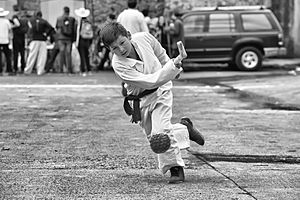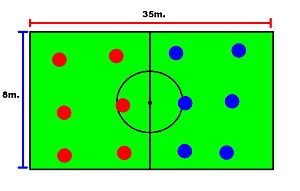Pelota purépecha facts for kids
Pelota purépecha is an exciting ancient Mexican sport that's a bit like hockey. Its name means "Purépecha ball" in Spanish. In the Purépecha language, it's called Uárukua Ch'anakua, which means "a game with sticks."
One cool version of the game, called pasárutakua, uses a ball that's actually set on fire! This fiery game can even be played at night. As of 2010, about 800 players across Mexico enjoy this sport. It's one of many ancient Mexican games that people are working hard to keep alive.
Contents
History of Pelota Purépecha

This amazing game started in Michoacán, Mexico. Experts believe it was first played about 3,500 years ago! Pictures that look very similar to Pelota purépecha can be seen on old murals at a place called Teotihuacán.
The sport began as a way to tell a special Purépecha story. It showed a battle between day and night. The flaming ball stood for the sun, and the players moving around represented the way the universe moves.
How to Play Pelota Purépecha
The game is played with five or more players on each team.
The Playing Field
In the past, Pelota purépecha was played around a group of houses or along four streets. These playing areas were usually about 6 to 8 meters wide and 150 to 200 meters long. Today, the game is also played in parks. You can even find it played on different surfaces, like snow, as some students have done at Cornell University.
The Ball
A Pelota purépecha ball is usually about 12 to 14 centimeters wide.
Regular Ball
The balls that are not set on fire were originally made from hundreds of monarch butterfly cocoons. Now, they are made from natural fabrics.
Flaming Ball
The fiery version of the ball is made from wood. Long ago, it was dipped in pine resin to make it burn. Today, people often use petrol to make the ball flammable.
See also
 In Spanish: Pelota purépecha para niños
In Spanish: Pelota purépecha para niños



